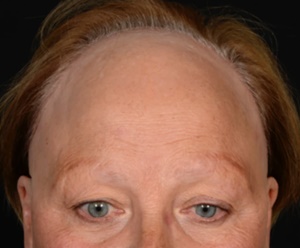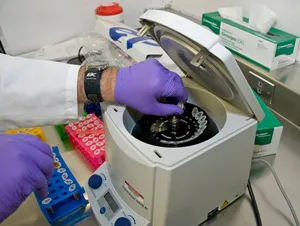
Female Hair Loss FAQ's
Introduction Female Hair Loss FAQ's- Image by Bryan Foto Female Hair Loss FAQ's- Image by Bryan FotoIt has been said that hair is a barometer of one’s health. Healthy hair is intimately connected to the overall health of the entire body. Any change in hair should be taken seriously as it could be the first warning sign of a more serious physical condition. Any person experiencing excessive, unexplained hair loss or a dramatic change in hair texture should consult their health practitioner. There are many possible causes of hair loss, and it’s often difficult to pinpoint the problem. Although there are other types of alopecia, the three main types of hair loss are:
Telogen EffluviumTelogen effluvium is also known as diffuse hair loss. It should be suspected if there is a sudden and overall thinning of hair from the entire scalp. There are many possible causes. These include but are not limited to nutritional deficiencies, hormonal imbalances, extreme or prolonged emotional stress, illness, or similar. Telogen effluvium does not usually lead to total baldness. Although there are exceptions to every rule, it can often correct itself once the underlying cause is corrected. Androgenetic Alopecia Female Hair Loss FAQ's - Image From Wikipedia Female Hair Loss FAQ's - Image From Wikipedia Androgenetic alopecia is characterized by thinning on the top and crown areas. The follicles in these areas begin to shrink, causing finer hair with a shorter lifespan. Eventually, the cells within these affected areas finally stop producing hair. This type of hair loss will not cause total baldness. Women with this predisposition may delay and minimize the effects by keeping their cells young and healthy. This type of hair loss may first show up during hormonal changes such as pregnancy, birth control pills, menopause, or hormonal changes which occur during periods of extreme stress. Alopecia AreataAlopecia areata usually starts as a round bald patch. It may progress to total hair loss from the entire scalp and body. It's believed to be an autoimmune disorder that can be triggered by many factors. These include but aren't limited to illness, high fever, bacterial or viral infection, extreme stress, trauma, allergy, and fungal infection. The follicles under the scalp lie dormant but remain alive for an indefinite period of time. It makes the condition a good possibility for re-growth to occur. SummaryWhatever the reason for hair loss, as long as the follicle has not been destroyed, there is always a possibility for re-growth. Remember, it's important to deal with the underlying issue that may be contributing to hair loss as it may be a symptom of a greater problem. |
|
If you want to talk more about this or other hair care articles on HairBoutique.com or anywhere else, please post a message on HairBoutique.com's Hair Talk Forums.
|
Social Media Network Information
Please follow us on Twitter at: https://Twitter.com/HairBoutique. I look forward to meeting new people from all walks of Twitter and learning from their Tweets.

















